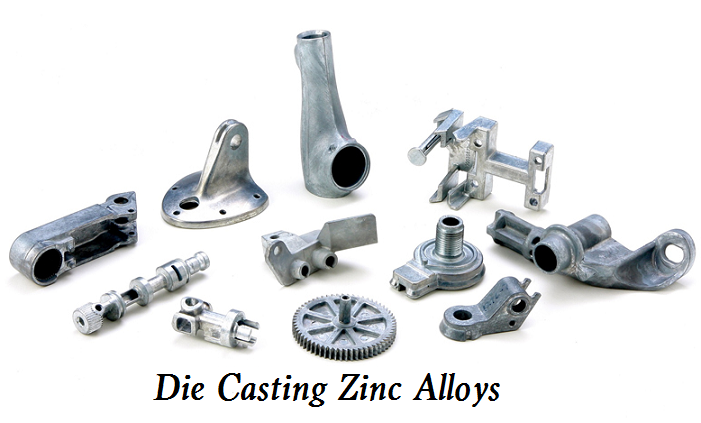Zinc and Zinc alloys for nonferrous induistries
Beyond Galvanization: Zinc's Indispensable Role in the Non-Ferrous World
While zinc is most famous for protecting steel through galvanization (a ferrous application), its true versatility shines in the non-ferrous industries—those focused on metals other than iron. From high-tech castings to fortifying critical alloys, zinc and its specialized alloys are essential to modern manufacturing.
Zinc is the third most used non-ferrous metal globally, surpassed only by aluminum and copper, a testament to its critical functional and economic advantages.
1. The High-Precision King: Zinc Die Casting Alloys
The single most important application of zinc in the non-ferrous field is in the production of zinc-based casting alloys, primarily through the hot-chamber die casting process. This method is renowned for producing complex, net-shape parts quickly and efficiently.
The main families of zinc casting alloys are:
A. The ZAMAK Alloys (Zinc-Aluminum-MAgnesium-Copper)
- Role: The workhorse of the die casting industry (Zamak 3 is the global standard). They offer an excellent balance of strength, ductility, and dimensional stability.
- Key Advantage: Unbeatable castability and extended die life. Zinc's low melting point (419.5?C) results in minimal thermal shock to the steel dies, leading to production runs far exceeding those of aluminum or magnesium.
B. The ZA Alloys (Zinc-Aluminum)
- Role: Developed for applications requiring higher strength, hardness, and wear resistance, competing directly with bronze and cast iron.
- Key Advantage: High aluminum content (up to 27%) dramatically improves creep resistance (resistance to deformation under constant stress), making them suitable for structural components and high-load bearings.
Why Choose Zinc Casting over Aluminum/Magnesium?
- Superior Precision: Zinc's high fluidity allows for thinner walls and tighter dimensional tolerances than any other cast metal, virtually eliminating secondary machining.
- Best Impact Strength: Zinc alloys have the highest impact strength of all common die casting materials.
- Non-Sparking: Many zinc alloys are non-sparking and non-magnetic, ideal for electronics and hazardous environments.
Non-Ferrous Applications: Automotive parts (housings, door handles), complex electronic connectors, industrial valves, and high-end hardware.
2. A Strategic Alloying Element in Critical Non-Ferrous Metals
Zinc's impact extends far beyond its own alloys. It is a vital component used to control and enhance the properties of other leading non-ferrous materials.
A. Fortifying Copper (Brass)
Brass is fundamentally an alloy of copper and zinc.
- Property Control: Zinc is added to increase the strength, hardness, and ductility of pure copper. Varying the zinc content allows metallurgists to precisely tailor the alloy for specific uses, from musical instruments to complex machined parts.
- Corrosion Improvement: Zinc improves the general corrosion resistance of the copper-zinc alloy system.
B. High-Strength Aluminum (The 7000 Series)
In the aerospace and structural industries, zinc is a critical element used in the highest-strength aluminum alloys.
- Precipitation Hardening: When combined with magnesium, zinc allows the aluminum alloy to be heat-treated. The resulting intermetallic compounds (MgZn2?) precipitate within the structure, creating the highest-strength commercial aluminum alloys available (e.g., Al-Zn-Mg-Cu alloys).
- Applications: Airframe components, high-performance bicycle frames, and critical defense parts.
C. Lightweight Magnesium
Zinc is a common addition to magnesium casting alloys (e.g., AZ91D) to improve the overall castability, mechanical strength, and corrosion performance of this ultra-light metal.
3. Dedicated Functional Applications
In its pure form, zinc serves crucial anti-corrosion and architectural functions:
- Sacrificial Anodes: As a highly electrochemically active metal, zinc is cast into anodes and attached to steel and aluminum structures (ship hulls, pipelines, water heaters) to provide cathodic protection. The zinc corrodes preferentially, sacrificing itself to save the more valuable structure from rust.
- Architectural Zinc: Rolled zinc sheet is used for highly durable, low-maintenance roofing, facades, and gutter systems. It develops an attractive natural patina and is highly valued for its 100% recyclability and decades-long lifespan.
Conclusion: Zinc is more than just a coating; it is a foundational metal in the non-ferrous sector. Whether as the base for the world's fastest casting process or as a strategic additive to make aluminum and copper stronger, zinc's role is indispensable to producing the precise, high-performance metal components that drive modern industry.
By using digital trade platforms like LOHAA Mobile application, you can reach global buyers, source quality material, and strengthen long-term partnerships.
Download LOHAA Mobile application today and connect with verified aluminium castings manufacturers and ingot suppliers worldwide.
